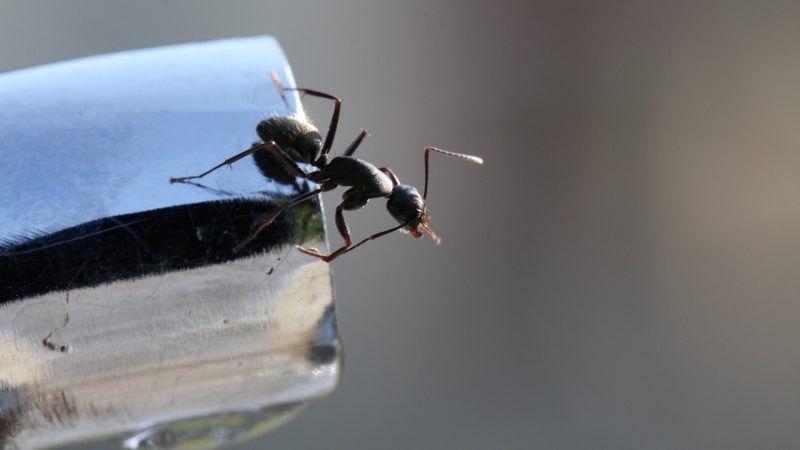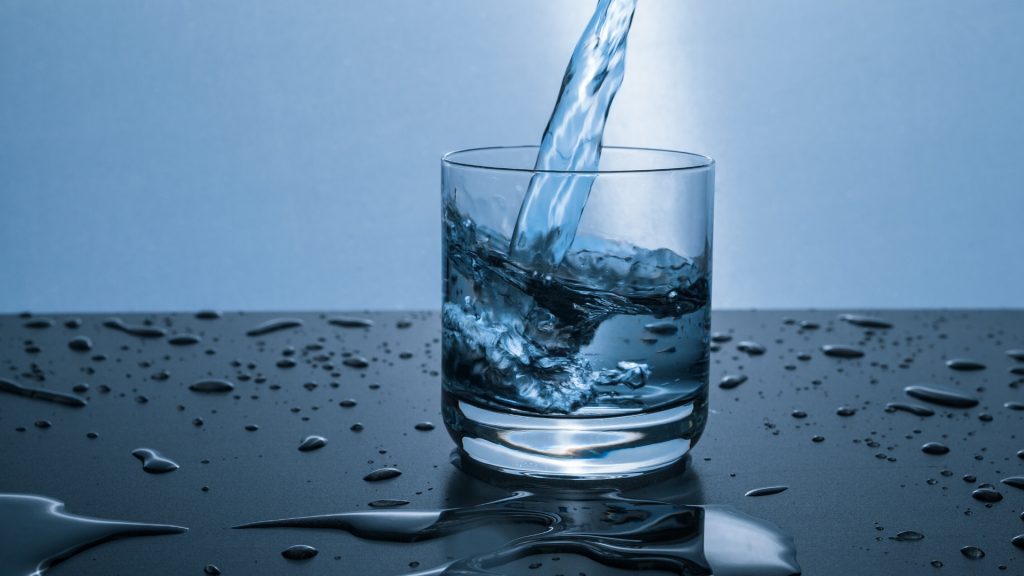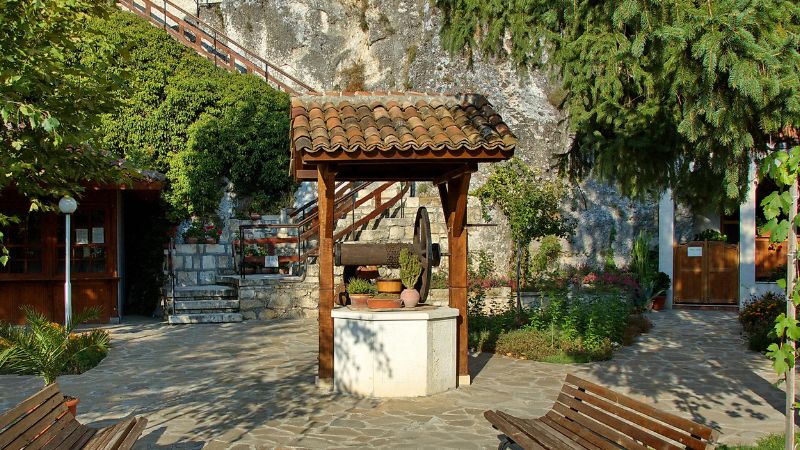It is not that common to have an infestation of ants in your well, but if it happens, you need to act fast and thoroughly. Have you ever seen ants coming out of your faucets, showerheads and other water appliances in your home? We did plenty, and believe us, and it is not a pleasant sight.
How to get rid of ants in well water? The first thing you should do is flush out your water system. After that, it is recommended to use a shock chlorination method on that well. This way, you can be sure that your water system is clean of any ant colonies.
This article provides you with everything you need to know not only about getting rid of ants in wells but also how to prevent future infestations. Read further for more!
How To Detect The Infestation Of Ants In your Well
The only and the best way to determine if you have an ant-infested well is to check your water appliances and plumbing, which includes checking around the well itself, faucets, and water filters in your home.
To check your well, remove the well cap and use the flashlight to check the inside of the casing pipe. Be sure to turn off the system’s electricity before starting this operation.
Newer systems already have built-in caps that prevent infestations of insects and other foreign objects. However, if you have an older well system, you should be double checking it.
How to Clean Your Well From Ants

If you are sure the well is infested with ants, proceed with the disinfection process as soon as possible. The first part includes flushing out the entire water system, which you can do yourself, to eliminate dead ants and their eggs.
Usually, one flush of the system is enough to clean the entire plumbing and every other part of the water system, but in more severe infestations, you should flush out the system more than once.
The actual cleaning includes using a shock chlorination procedure. By chlorination, you remove any bacteria ants could carry into the water. You can try performing chlorination by yourself by using household bleach, but if you never did this before, it is recommended to call the professionals.
How to Prevent Ants From Getting Into the Well Water
For starters, keeping the area around the well neat and clean is recommended. This includes regular cutting of any tall weeds or any tall vegetation. It is easier for the ants to get to the well water from the height, so you will need to learn how to live without tall vegetation around your well.
All other basic garden maintenance is also recommended, which includes:
- Don’t keep woodpiles for too long close to the well. Dispose of them regularly.
- Leaf remains can be a harboring spot for all insects, including ants. Keep space around your well clean of any leaf piles or debris.
- Be on the lookout for anthills. If you spot one, be sure to eliminate them.
- Check if the cap of the well is in good condition at least once a year. A good working cap can help a lot when it comes to the prevention of ant and other insect infestations in your well.
How to Be Sure That Your Water System Is Clean From Ants?

To be sure that your water system is clean and ready to use, perform a yearly bacteriological test of the water. The most common bacteria found in insect-infested water systems are coliform bacteria, which usually come from septic systems and animal waste.
Coliform bacteria end up in your water system by sticking to insects like ants, and they carry it into your water. When you conduct the test, a positive result doesn’t always mean that your water is ant infected. Even if your results show positive for bacteria, do a physical search for ants around and in your well.
Only if you spot ants near your well, you can be sure to have a bacteria problem too. Coliform bacteria, in most cases, won’t affect healthy individuals but can point out the presence of some other bacteria that can cause real harm.
In What Other Cases Should You Shock Chlorinate Your Well Water?
Shock chlorination should be done in a couple of more cases besides ant and insect infestation. Here are other recommended times you should perform shock chlorination:
- Installation of new wells
- Anytime you do any repair on your well
- If any floodwater breaches your well
- In case of installing new equipment like a holding tank, pump or pressure tank
- After installing any new piping or plumbing in your system.
How Can You Chlorinate Your Well By Yourself?

There are a couple of steps that you can follow to conduct this process. If, after reading this, you are still unsure whether you can do it yourself, call the professionals.
- Store up some water supply before you start because you will need some water supplies for everyday use.
- Chlorination can damage your equipment, so disconnect all the filters, water softeners and purifiers from your water system.
- The width and depth of your well will determine the quantity of bleach you will be using. If you are not sure about the dimensions of your well, contact a local well driller.
- Remove the well cap, and apply the bleach directly into the well.
- Use your garden hose to do a thorough rinsing of the inside of your well.
- First, turn on all outdoor faucets and let the water run on the ground. After that, turn on all indoor faucets and let them run until you smell the strong scent of chlorine from all the faucets.
- Let chlorine sit in your well 12-24 hours. That will be enough time for the chlorine to take full effect.
- Wash down the chlorine from your well. This might take some time, but you must test the smell of water to ensure it is ready for use. Just to be sure, you can buy this water kit test.
- Comprehensive Testing: Detects a wide range of contaminants,...
- At-Home Convenience: Suitable for any drinking water—TAP or...
- Cost-Effective: Provides a budget-friendly solution, eliminating...
- Advanced Technology: Proprietary technology detects low levels of...
- Trusted by Professionals: Watersafe is trusted by universities,...
Which Bleach Should You Use for Cleaning Your Well From Ants?
The best way to chlorinate your well is by combining dry pellets and dry chlorine granules with water. Dry pellets will ensure that your whole well is treated because it will go down behind the pump, and the addition of liquid bleach will do its cleaning magic.
- EASY TO USE: Simple to follow DIY instructions are included in...
- ELIMINATE BAD SMELL: Kills bacteria to provide disinfection and...
- COST-EFFECTIVE: No need for costly filtration systems or...
- EVERYTHING YOU NEED: Kit contains BWI Chlorine Calcium...
- WATER SANITIZER: USDA food grade water purifier calcium...
You can use ordinary household bleach, which contains 5.25% sodium hypochlorite, or pool chlorine with its 10-12% sodium chlorine. It is not recommended to use pool pellets because they are not intended for use in portable water.
If you want to keep your well water and water systems clean and safe for use, keep your yard clean and neat and do a yearly checkup of all your water and plumbing systems. Prevention is the best cure when it comes to problems that are this serious.
Related: How to Get Rid of Ants | Safe and Effective Methods
List of Sources
Atiles, J. H., & Vendrell, P. F. (2012). Disinfecting Your Well Water: Shock Chlorination
Office of Drinking Water & Municipal Assistance, State of Michigan. (2020). Insects in Your Water Well.
Saha, U., Sonon, L., Turner, P., & Kissel, D. (2022). Protecting Your Well and Wellhead
Texas A&M AgriLife Extension Service. (2021). Well Owner’s Guide to Water Supply.
U.S. Geological Survey. (2018). Pesticides in Groundwater.
- Bed Bug Surge 2025: How to Detect, Prevent, and Safely Eliminate Infestations in Top U.S. Cities - June 18, 2025
- Asian Needle Ants Invade US Homes: 2025 Guide to Identification, Risks, and Effective Control - June 11, 2025
- New World Screwworm Alert: How US Livestock Owners Can Prevent Outbreaks and Protect Herds [Summer 2025 Update] - June 8, 2025



